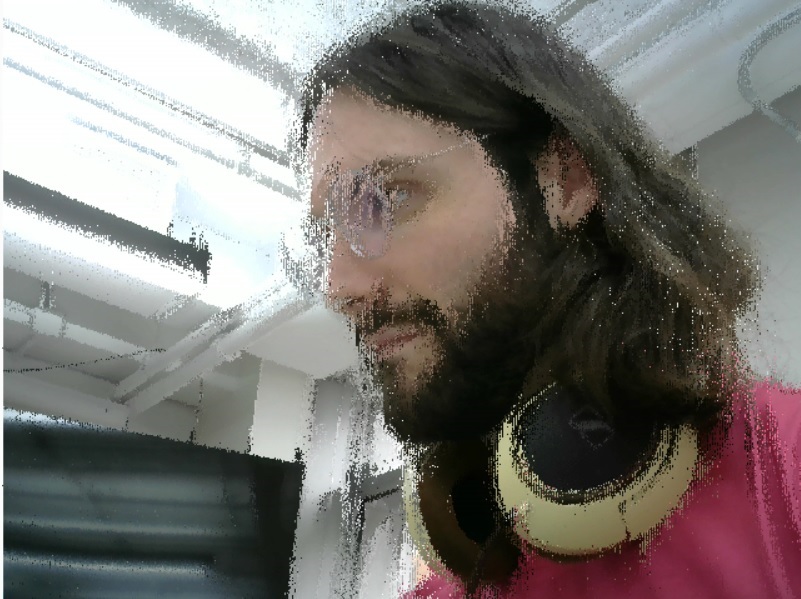For our first ICM homework we were tasked to do something with createCapture(); in P5, which is basically a function that streams video from your webcam to your P5 sketch. I actually had an idea almost immediately, for a sketch that erases the viewer if the move too much. I wanted to make a createcapture where you had to stand very still, or else the video would disappear.
In my head, I had an idea for how I'd do this. What I planned to do is keep track of the RGB values for each pixel, and if they changed from loop to loop I'd lower the alpha. Theoretically, this means that eventually the alpha for pixels where people kept moving would go all the way down, and that part of the image would disappear.
At the beginning my sketch had three parts. I set up the setup function, where I got the image, I drew it in draw and accessed the pixels, and up top I put a number of global variables which would hold my rgb values in state: currentred, currentgreen, pastblue, pastred, etc. This way I could keep track of what the previous rgb values were and compare them to the current ones.
In the draw section, I set up if statements inside my pixel for loops to check if currentred != pastred, and if they found the two reds weren't the same they dropped the alpha all the way down. This did something, but not the something I wanted. It looked sort of like pixels that changed often were constantly disintegrating, but they kept coming back, which was definitely not what I wanted.
One obvious problem that someone pointed out was that in my for loops I was keeping track of one global variable, currentred and pastred, that would account for all of the pixels, so that every time the loop ran over a pixel of course things would change. To actually keep track of all the rgb states for each pixel, I had to set up an empty array, which I called pixelValues. The way pixelValues worked is that for every pixel I would measure its rgb (in the pixel for loop), and then place those values in the same index in pixelValues that they had in the video pixel array. That way, I had a copy of my pixel array with the past values, and I could compare every one to the current value to get an actually accurate assessment of which pixels were changing.
Even when I got this problem solved, I couldn't figure out how to keep the alpha in state so that the video would slowly disappear, so I improvised. What I ended up doing was watch for changing pixel values, and if the pixel values changed at all I dropped the alpha all the way down. This produced an effect where it looked like someone would pixelate and teleport when they moved, which all things considered was pretty cool. It still fits into my theme of having to stand still as well, and I'm certainly going to go tweak this algorithm more in prder to get it working the way I want.
Throughout my life, I've known so many people who lived in the past, or who were scared of ever moving because they didn't know what the future held. In some cases I've been that person, too. So this is a sketch for all these people.
Code can be found here.
 Comments? Questions? Concerns? Email me
here!
Comments? Questions? Concerns? Email me
here!